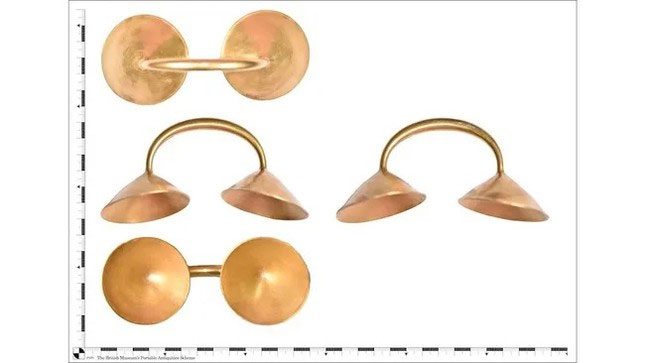An amateur metal detectorist in the United Kingdom has unearthed a remarkable 3,000-year-old gold clasp. This clasp was once used to fasten clothing during the Late Bronze Age (1000 to 800 BC).

The gold clasp was likely used to hold clothing together. (Photo: The Trustees of the British Museum).
Jonathan Needham discovered this artifact while metal detecting in Staffordshire, a county in central England, according to a statement from the British Museum. Needham reported his find to the Derby Museum, as required by the Treasure Act of 1996, which mandates the reporting of significant archaeological discoveries.
According to the statement, museum researchers determined that this “beautifully preserved” object may have been made in Ireland, providing a cultural link between Ireland and England during the Bronze Age.
The gold clasp features an end shaped like a “bow” or “handle” connecting two elegantly raised conical devices and could have been used to fasten the skirt or cloak of an important figure. It shows some scratches, likely due to wear, and measures approximately 12.7 cm.
This gold clasp is one of seven found across England and Wales, but researchers consider it the best-preserved example from England. The British Museum regards this gold clasp as one of the most significant archaeological discoveries in the UK for 2023.
According to the British Museum, other notable discoveries in 2023 include a carved bone bead necklace and a hoard of Iron Age gold hidden inside an empty tinderbox.
The museum plans to acquire this artifact as part of its permanent collection.


















































